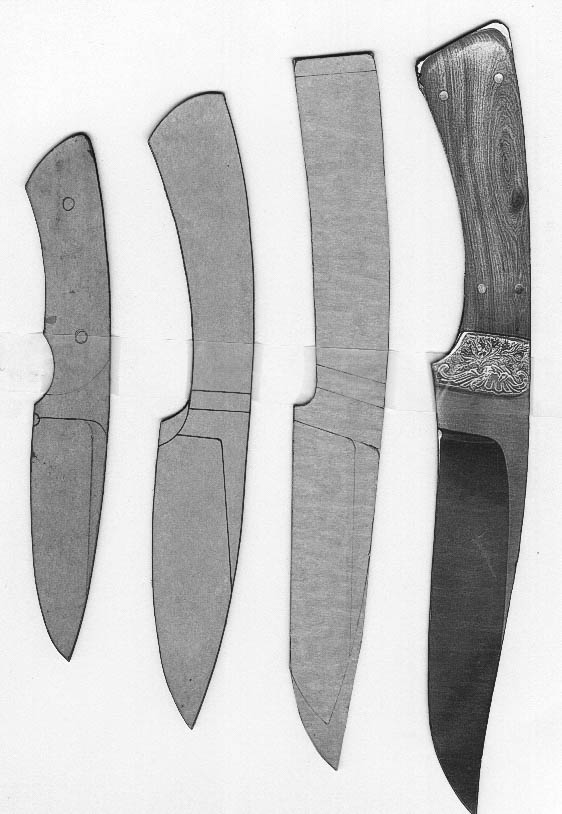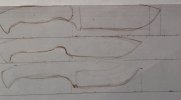Stacy E. Apelt - Bladesmith
ilmarinen - MODERATOR
Moderator
Knifemaker / Craftsman / Service Provider
- Joined
- Aug 20, 2004
- Messages
- 38,187
Here is a screen shot of one of the Lloyd Harner Knife Templates. Lloyd left them to knifemakers everywhere to use for free.
Lloyd harner knife templates - Bing
Stiff and straight spined knifes often come across with a "Sharpened bar of Steel" look. Notice the gentle curve of the spine and the easy to fit the hand shape of the handle. Every knife does not need to be shaped like this, but your first knives should try to incorporate these ideas. Also notice how he sketched in a possible change to one of the blade shapes. For first knives I always recommend a drop point hunter. 3.5" blade and 4" handle.
You can start by making a dozen strange knives that you designed yourself and you will proudly say, "I made these myself." ... or .... You can make one perfect simple drop point hunter and people will say, "Wow, you made that yourself?!"

Lloyd harner knife templates - Bing
Stiff and straight spined knifes often come across with a "Sharpened bar of Steel" look. Notice the gentle curve of the spine and the easy to fit the hand shape of the handle. Every knife does not need to be shaped like this, but your first knives should try to incorporate these ideas. Also notice how he sketched in a possible change to one of the blade shapes. For first knives I always recommend a drop point hunter. 3.5" blade and 4" handle.
You can start by making a dozen strange knives that you designed yourself and you will proudly say, "I made these myself." ... or .... You can make one perfect simple drop point hunter and people will say, "Wow, you made that yourself?!"



 IMG_8927
IMG_8927 IMG_4550
IMG_4550
